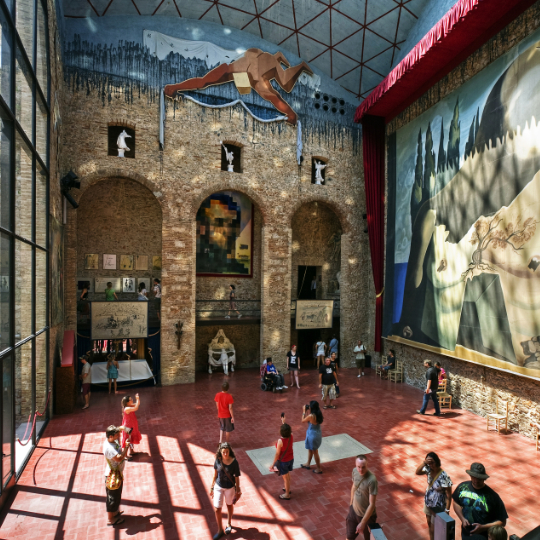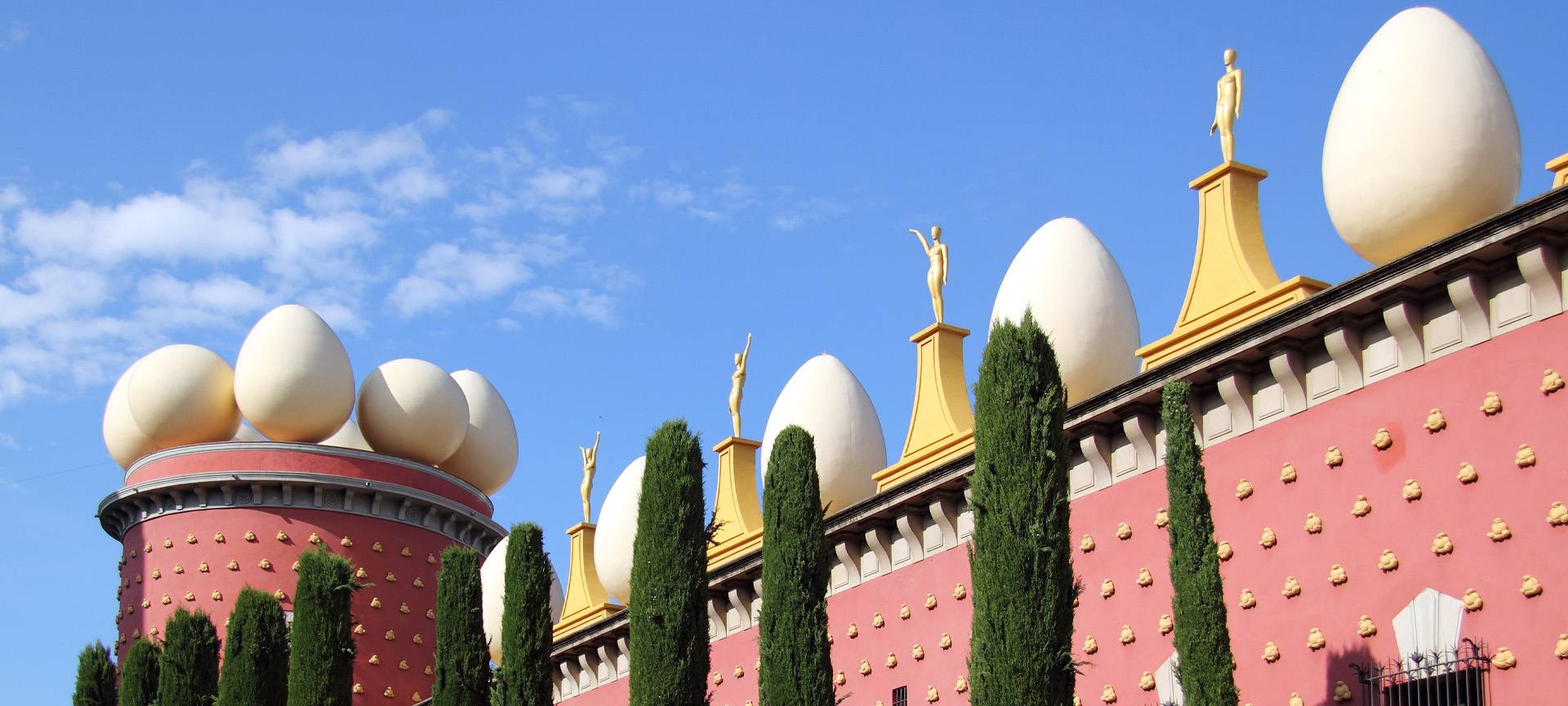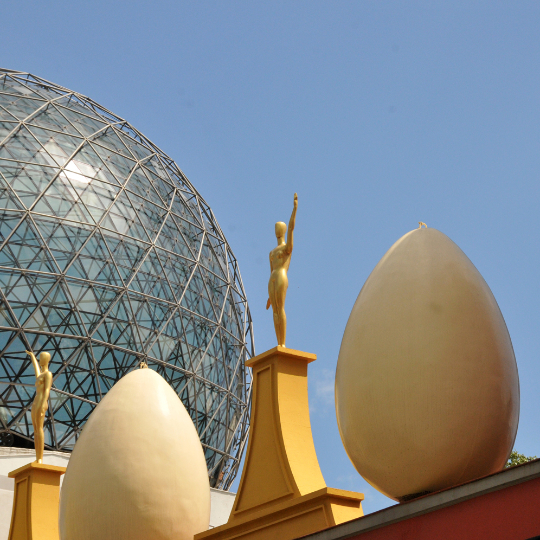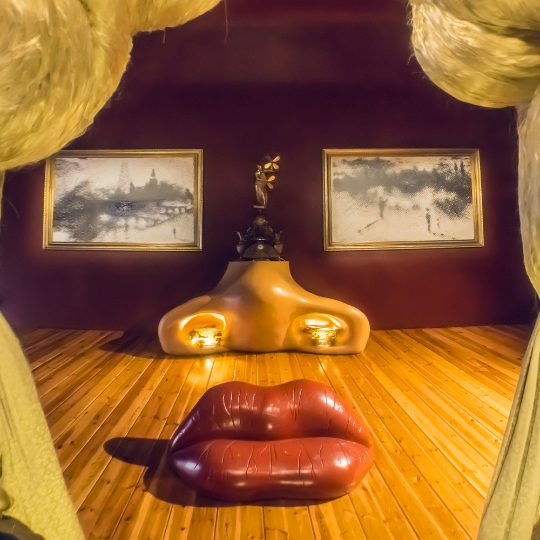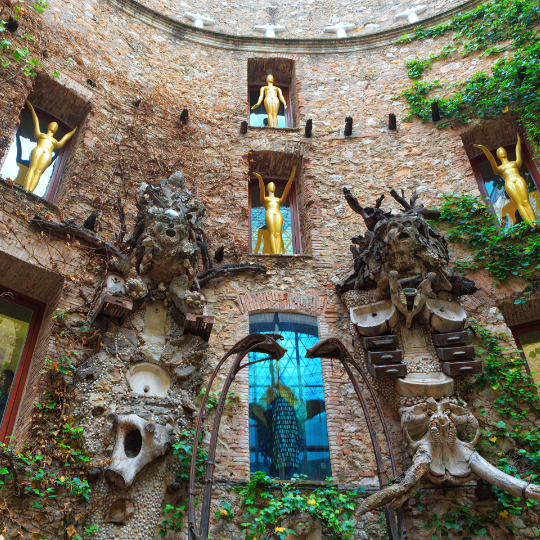Where did the idea come from?
In the 1960s, the mayor of Dalí’s home town of Figueres asked the artist to donate one of his works to the town’s Ampurdán Museum. Dalí decided that the town deserved a lot more than just one of his works and that, instead, it would be the place in which his art lived on. And so the project to build his own museum was born.The next step was to choose a site on which to build it. The artist was fond of the Figueres Municipal Theatre, not just because of his predilection for theatrical works, but also because he held a very treasured memory there: its lobby hosted his very first exhibition. However, the building was practically destroyed by air raids during the Spanish Civil War. So Dalí chose to rebuild the theatre to house his museum.
